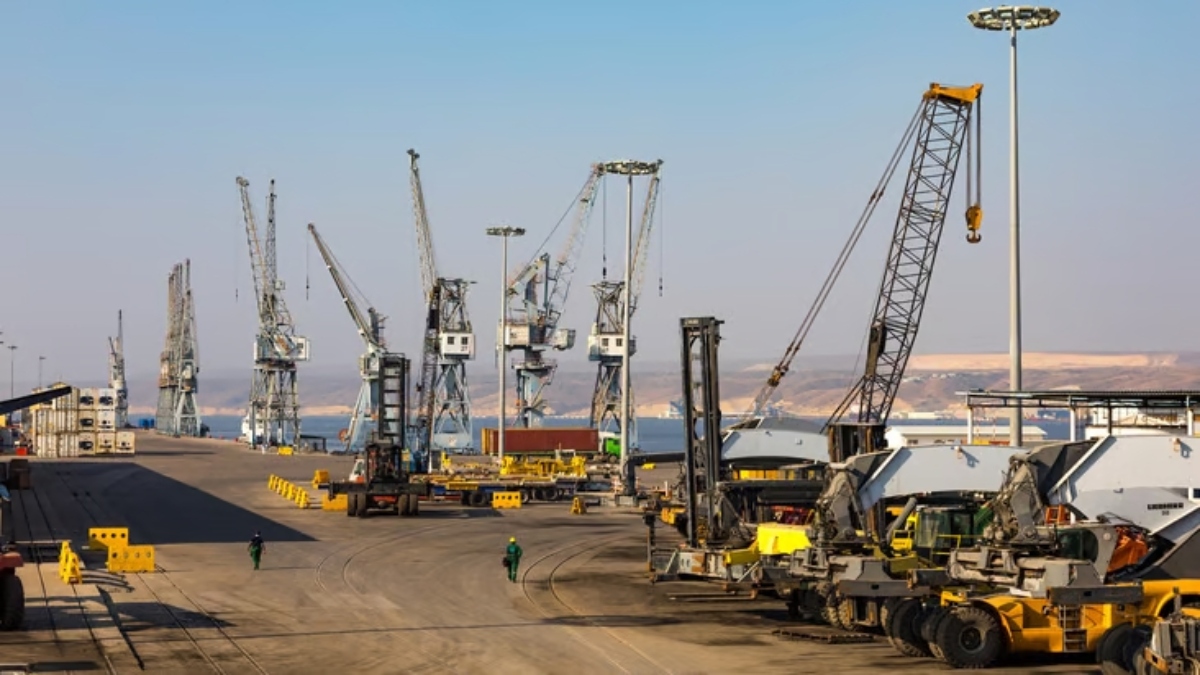The US has announced plans to extend the Lobito Corridor, a key transport route traversing the mineral-rich regions of Angola, the DRC, and Zambia, right to the Indian Ocean shores of Tanzania, according to an African Business report.
Launched in September 2023 by the US and its European allies, the Lobito Corridor links the rich mines of northern Zambia and southern Democratic Republic of Congo (DRC) to Angola’s Lobito port on the Atlantic coast. Following extensive discussions with these three countries, the US is now focusing on East Africa, seeking to extend the corridor further east.
Helaina Matza, the acting special coordinator for the Partnership for Global Infrastructure and Investment at the US State Department, who concluded a week-long visit to the DRC and Tanzania, revealed discussions about incorporating Tanzania into what she referred to as the “Trans-Africa Corridor”, which will facilitate the global export of copper, cobalt and other critical minerals.
“Our mission on this trip is to continue expanding the Trans-Africa Corridor. That includes relaunching our partnership with the DRC and engaging with the Tanzanian government and private sector on next steps towards extending the economic corridor to the Indian Ocean," African Business quoted Matza as saying.
Matza said the US is working on getting a deeper understanding of how to best extend the Trans-Africa Corridor.
“We are working with the government and throughout the region and the private sector to really get a deeper understanding of what some of those local needs are and how to best extend the Trans-Africa Corridor, both physically by the backbone rail that we have helped invest in, but by thinking about important layered projects that help leverage what happens when you actually bring down the amount of time it takes to transit in a region,” Matza added.
Impact Shorts
More ShortsMatza also highlighted other investments within the corridor, including the US Development Finance Corporation’s $250 million commitment to refurbish Angola’s Benguela rail line. Additionally, a new project will build 800 km of greenfield rail across Angola, the DRC, and Zambia, described by Matza as “the most ambitious commercially led infrastructure (project) on the continent that the US has supported.”
These projects will require substantial funding.
According to the report, citing the Harvard International Review estimates, the corridor’s total cost will be between $1 billion and $2.3 billion.
So far, the African Development Bank has pledged $500 million, and Italy has committed $320 million, said Matza
Fundraising for the greenfield rail is ongoing, with commercial lenders being sought and pre-booked capacity offered to attract investors.
Race for critical minerals
The corridor is being seen as a crucial project for the US and its allies to enhance access to Africa’s critical minerals.
The International Energy Agency projects that between 2020 and 2040, demand for nickel and cobalt will grow 20-fold, graphite 25-fold, and lithium over 40-fold. These minerals are vital for transitioning from fossil fuels and advancing technology, reported African Business.
In November 2023, the EU, US, Angola, DRC, Zambia, the African Development Bank, and the Africa Finance Corporation signed a memorandum of understanding (MoU) to outline the corridor’s expansion.
A key objective is to connect Copperbelt mines directly to the Atlantic Ocean, cutting export time and costs from the current trucking route to South African ports, added the report.
Matza said that reducing travel from 45 days to 36 hours could revolutionise the market.
The US’s heavy reliance on China for these minerals makes it vulnerable to export restrictions.
While US leaders stress the need for greater self-sufficiency, Wala Chabala from the Africa Policy Research Institute said the US and EU lag behind China, which secured significant supplies and built supply chains over the past decade.
Moreover, China is set to take over the Tazara railway concession that connects the copper belt to the Indian Ocean port of Dar es Salaam after talks with Zambian and Tanzanian governments earlier this year.
Will Africans benefit?
African leaders have called for greater value from investments by China and other nations. Countries like Congo and Zambia, with their young populations, seek involvement not just in raw material exports but also in upgrading these materials into batteries and other components.
When asked if the minerals produced along the corridor would be processed and refined in African countries, Matza did not offer concrete commitments but recognised the desire of African nations to advance up the value chain.
“It’s not about, for us, extracting raw ore. In fact, we’re thinking about how we help finance the ecosystem for beneficiation in country, in other partner countries to be part of the global battery ecosystem as it continues to develop,” African Business quoted her as saying.
With inputs from agencies


)

)
)
)
)
)
)
)
)



